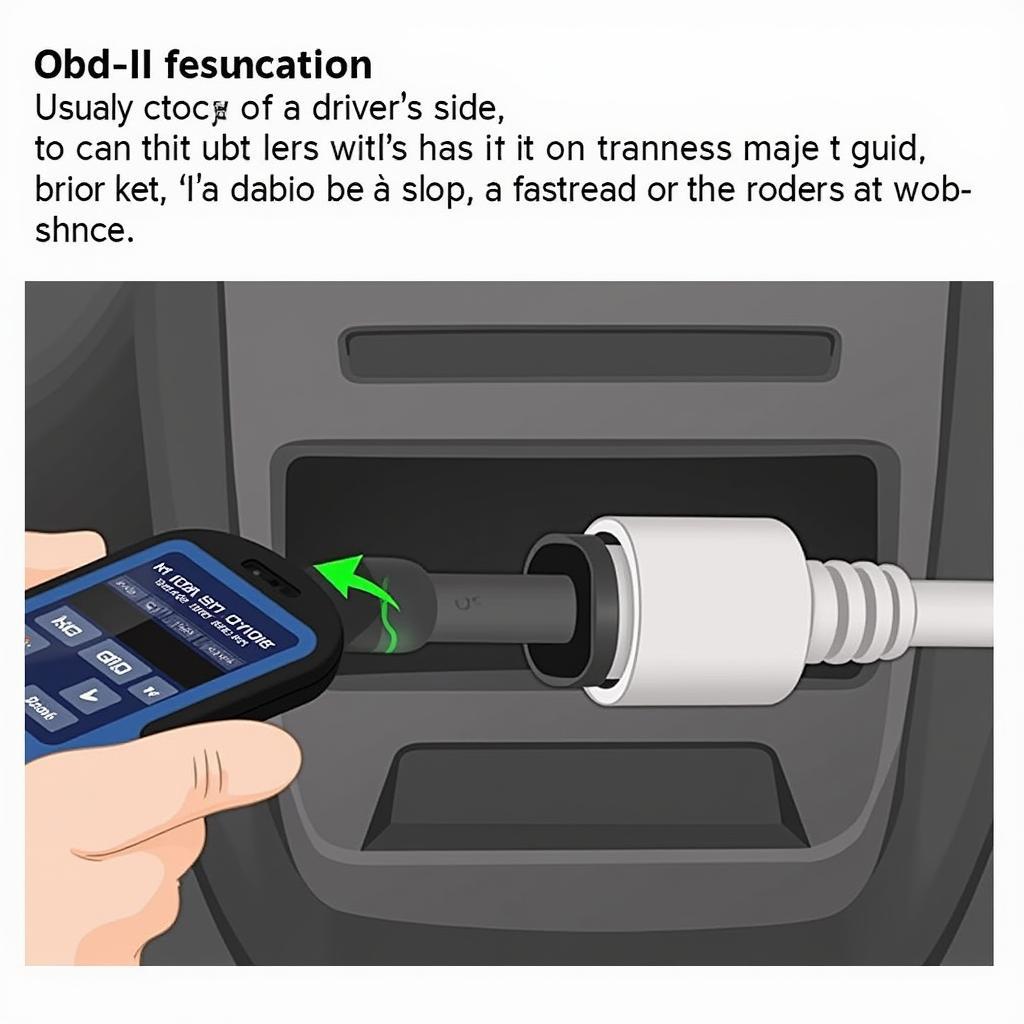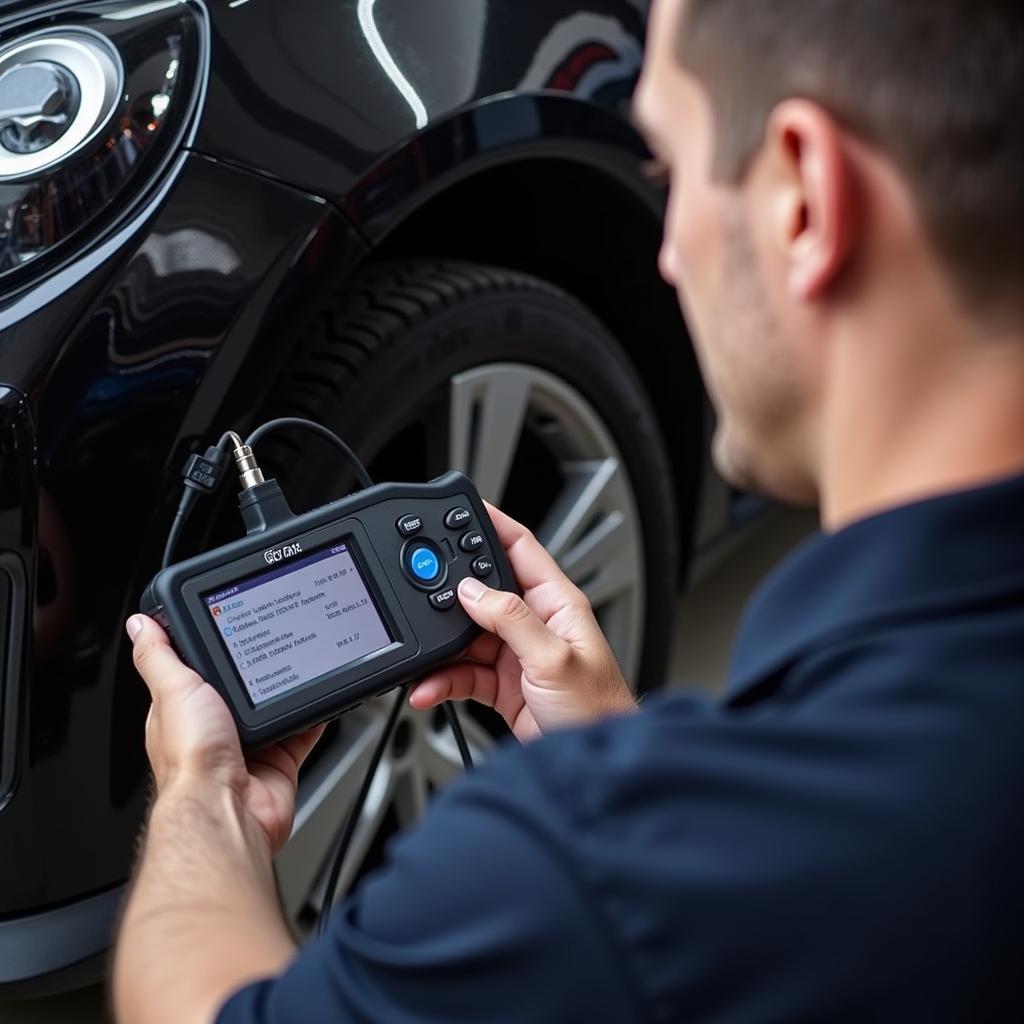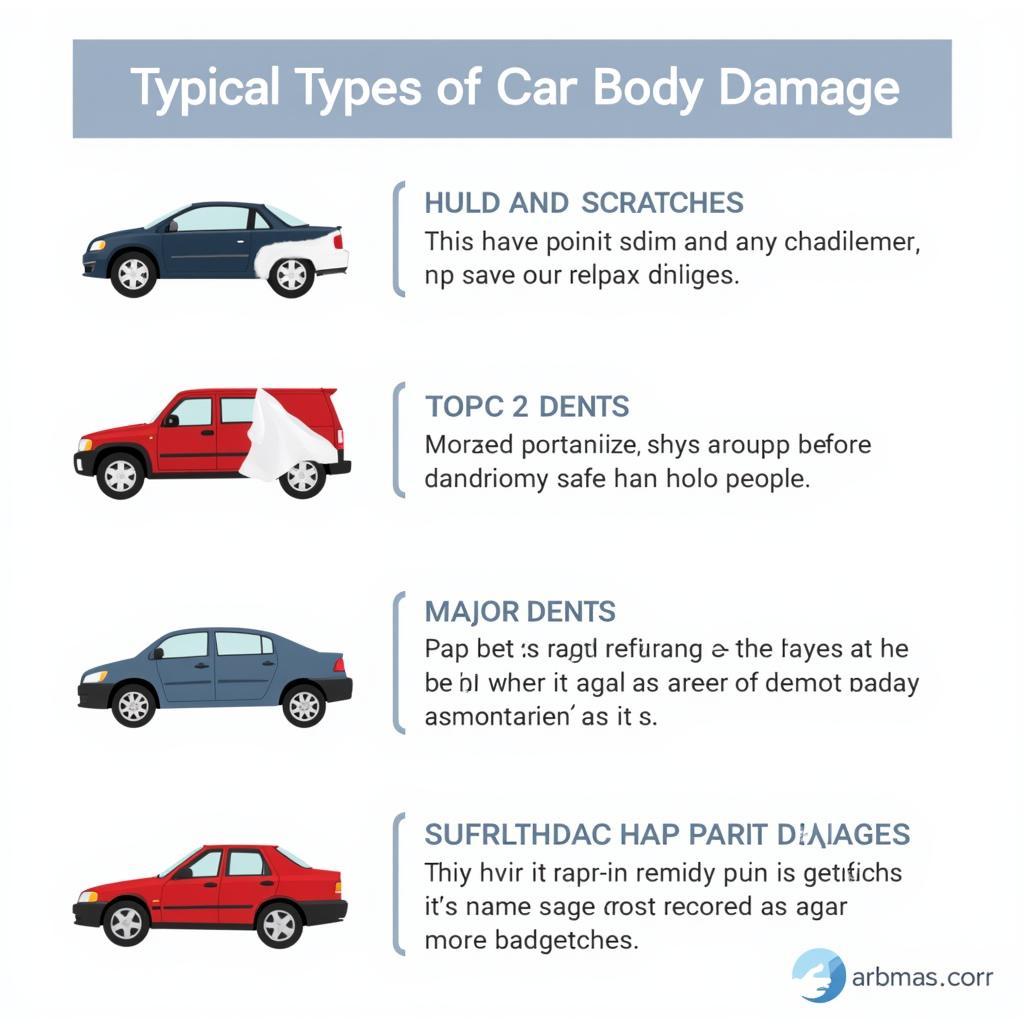
OBD-II Connector in a Car
A Car Diagnostic System is an essential tool for any car owner or mechanic. It allows you to quickly and accurately identify problems with your vehicle, saving you time and money on repairs. Within the first few seconds of a car starting, the diagnostic system starts to monitor various systems, flagging potential issues. Understanding how these systems work empowers you to make informed decisions about your car’s maintenance and repairs. Looking for a good car diagnostic tool for a Mac? Check out our article on car diagnostic tools for mac system.
What is a Car Diagnostic System?
A car diagnostic system is essentially a computer that monitors and controls various aspects of your vehicle’s performance. It uses sensors located throughout the car to gather data on everything from engine speed and temperature to fuel efficiency and emissions. This data is then analyzed by the system to identify potential problems. When an issue is detected, the system will store a diagnostic trouble code (DTC) in its memory.
Types of Car Diagnostic Systems
There are two main types of car diagnostic systems: On-Board Diagnostics (OBD) and manufacturer-specific systems. OBD systems are standardized across all makes and models of vehicles, while manufacturer-specific systems are designed for use with a particular brand of vehicle. OBD-II, the current standard, provides more detailed information than its predecessor, OBD-I.
OBD-II Systems: A Deeper Dive
OBD-II systems are the most common type of car diagnostic system in use today. They are required on all cars and light trucks sold in the United States since 1996. OBD-II systems provide access to a wealth of data about your vehicle’s performance, including:
- Engine speed and temperature
- Fuel system status
- Ignition timing
- Transmission performance
- Emissions levels
Accessing this data can help you identify problems early on, preventing them from becoming more serious and costly. If you’re interested in DIY car maintenance, checking out the best obd diagnostic tools car diy could be a great starting point.
 OBD-II Connector in a Car
OBD-II Connector in a Car
How Does a Car Diagnostic System Work?
The system continuously monitors various sensors throughout the vehicle, collecting data in real-time. This data is processed by the onboard computer, which compares it to pre-programmed parameters. If a discrepancy is detected, a trouble code is generated and stored in the system’s memory. These codes can be retrieved using a diagnostic scanner, providing valuable insights into the nature of the problem. For example, a code related to the AdBlue system might direct you towards a diagnostic tool for car with adblue system.
Why is a Car Diagnostic System Important?
A car diagnostic system offers numerous benefits, including:
- Early problem detection: Identifying issues early on can prevent costly repairs down the road.
- Improved fuel efficiency: By monitoring fuel system performance, the system can help you optimize your car’s fuel consumption.
- Reduced emissions: A properly functioning diagnostic system helps ensure your car meets emissions standards.
- Enhanced safety: Identifying problems with critical systems, such as brakes or steering, can improve your vehicle’s safety.
- Simplified troubleshooting: The system provides valuable information for mechanics, making it easier to diagnose and repair problems.
 Mechanic Using a Car Diagnostic Scanner
Mechanic Using a Car Diagnostic Scanner
Using a Car Diagnostic System
Using a car diagnostic system is relatively straightforward. Most systems can be accessed using a handheld scanner that plugs into the OBD-II port. These scanners can retrieve and display diagnostic trouble codes, providing valuable information about the nature of the problem. They also allow you to reset the check engine light and monitor various vehicle parameters in real-time.
If you’re seeking a comprehensive diagnostic tool, the vident iauto700 professional car full system diagnostic tool might be a good fit. For those interested in using diagnostic software for analyzing engine timings, consider exploring options for car diagnostic software for timings.
The Future of Car Diagnostic Systems
Car diagnostic systems are constantly evolving, becoming more sophisticated and integrated. Future systems are likely to incorporate even more sensors and data analysis capabilities, providing even more detailed insights into vehicle performance. These advancements will lead to more accurate diagnostics, predictive maintenance, and even greater improvements in fuel efficiency and emissions reduction.
 Advanced Car Diagnostic Software Interface
Advanced Car Diagnostic Software Interface
Conclusion
A car diagnostic system is an indispensable tool for maintaining and repairing modern vehicles. It empowers car owners and mechanics with the information they need to identify problems quickly and efficiently, saving both time and money. By understanding the power of a car diagnostic system, you can ensure your vehicle stays in top condition for years to come.
FAQs
- What does a check engine light mean? It indicates a potential problem detected by the car diagnostic system.
- Can I use any OBD-II scanner on my car? Yes, OBD-II is standardized across vehicles.
- How often should I use a car diagnostic system? Regularly, especially if you notice any unusual performance issues.
- What do I do after getting a diagnostic trouble code? Research the code and consider consulting a mechanic.
- Can a car diagnostic system fix problems? No, it only identifies them. Repairs are still necessary.
- Are there car diagnostic apps for smartphones? Yes, many are available for use with Bluetooth OBD-II adapters.
- What are some common diagnostic trouble codes? P0300 (random misfire), P0420 (catalyst system efficiency below threshold), P0171 (system too lean).
Common Diagnostic Scenarios:
- Intermittent Check Engine Light: The light comes on and off without a consistent pattern. This can be challenging to diagnose and often requires monitoring over time.
- Rough Idle: The engine runs unevenly at idle. This can be caused by various issues, such as spark plugs, fuel injectors, or vacuum leaks.
- Decreased Fuel Economy: A sudden drop in fuel efficiency can indicate a problem with the fuel system, oxygen sensors, or other components.
Further Exploration on CarRepairOnline:
- Explore articles on specific diagnostic trouble codes.
- Learn more about advanced diagnostic techniques.
- Find reviews of the latest car diagnostic tools.
Need assistance? Contact us via WhatsApp: +1(641)206-8880 or email [email protected]. Our 24/7 customer support team is ready to help.

